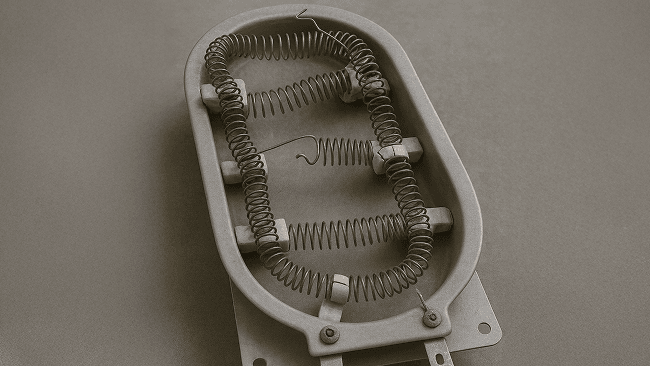Refrigerator Evap Fan Replacement
I'm gonna be showing you how to change out a, uh, evaporator fan motor on a freezer top refrigerator. And this is a refrigerator with the, obviously the freezer on the top and the refrigerator. Uh, compartment on the bottom. Uh, some symptoms of a bad ref, uh, evaporator fan motor would be that you do not hear any fan or running noise in the freezer while the rest of the fridge is running compressor.
Um, the door, you see the, you see the door light on, things like that, but you hear nothing coming from the freezer. Um, or you have a situation where the freezer itself. Uh, it seems to be working fine. It's making ice, it's freezing food, but in the refrigerator compartment underneath it, things are getting warm and the food is actually starting to go bad or spoil because it is not as cold as it should be.
Um, we start with replacing the evaporator fan motor as you need to take out all of all the food that's already in the refrigerator, and then anything that is obstructing this back panel here. Needs to be taken out. So in our case, it's gonna be a rack here. And our, um, our, uh, ice maker here. In the case of the ice maker,
it's going to be three screws, two on top here.
And all you need to do for this particular, this is a Whirlpool model. You just need to loosen these two SCO top screws. And then the bottom screw here. Usually there's a screw. Uh, in this case it's not, but sometimes there's a screw on the bottom, which you have to take out completely. And then after that
you have your power connector here for your ice maker, and it's just a little tap that you push in and pull out.
And then the whole ice maker assembly comes out in one piece, and then now you have to take out. Your back panel here for your duct, for the evaporator fan, and in our case, it's gonna be a screw here behind this little clip. This you just pop it out behind here. Here, there's gonna be one down here, one on the other side here,
and then that's it.
So it's gonna be six, I'm sorry. And one here. There's gonna be six screws total behind these little caps.
Also, I forgot to mention, to, uh, disconnect power. So unplug the refrigerator from the plug in the back or turn off your breaker. Um, the evaporator will still work even though the fan isn't running, so it'll, it'll start making, it'll continue making cold, which will be working against you.
Also, if the freezer fan is running, um, at any point you don't want it to run and it'll, you know, hit you, uh, hit your knuckle or something like that, just turn the whole system off while you work. It'll be a lot easier.
Now once you have all your screws out,
um, what you're gonna do is you're likely going to need a hairdryer to thaw everything out.
'cause if your evaporator fan motor is not working, everything's gonna be all frosted and frozen up pretty good. So a good rule of thumb is to kind of thaw everything out or you're gonna have very difficult time. Trying to get everything apart 'cause everything will be frozen together. In this case it is not.
But all you would do, once everything is thawed, this thing should just come and swing over very easily. And now you have a foam duct insert here that is, that will surround your evaporator fan motor, which is this. And again, everything will probably be frozen. So in my case, it's very easy to come out, but in your case it would likely be frozen.
So I would recommend thawing it out. If you don't, you'll likely try to break this foam piece while you take it out. But this piece does need to come out and be set aside and now. You'll be able to see down here. This is your duct where the air blows over the foam piece, behind the foam piece, over the evaporator coils.
And we'll go in these holes here, which goes into the refrigerator. And this is how the cold air goes into refrigerator. It's made in the freezer over the evaporator, and then down. Through your, um, your duct into your refrigerator. So you're likely gonna have all kinds of ice here, um, in here blocking the flow, which is kind of likely why it's going to be warm in your refrigerator.
And also this is your drain. This is likely going to be frozen and blocked as well. Um, if it is, you will need to thaw all this ice out that will be here and unclog this drain so the water will flow down this hole here. Or you'll have a situation where it'll get all froze up again. Um, but once you have that, those things off, and then you can go ahead and disconnect your evaporator fan here by unplugging your connector right there.
And then there'll be a screw here and a screw on the other side, and you just remove both screws. Now that your evaporator fan is off the back wall of the refrigerator, you're likely gonna have some sort of ground that attaches to the motor, um, usually grounded by a separate wire or it'll be grounded to the backside.
The case of the refrigerator in different models are, require different, different models of different applications, but for the most part, it's all pretty standard. You'll have a ground wire. A few screws to hold the fan onto the, the, uh, the back of the refrigerator like that. And then if you disconnect your power here, everything should come off normal.
These wires do, do not go to the evaporator. They're just routed through it, as you can see. But if I could just pull these wires out, and then eventually the whole fan assembly would come out, and then you would replace it and put it back. On the wall with a new fan motor in there, or the assembly, depending on how it comes for you.
And then you just screw your screws to the back wall.
You have your, uh, evaporator fan connected back to the refrigerator. Don't forget to plug your connector back so you have your power and then you're gonna go ahead. And just basically reverse order everything after you've, again, unclog the drain, de-iced everything. Make sure everything is, is normal, how it should be without everything icing up.
If you're gonna, don't forget to put your duct back and if it's broken or crack, that would recommend replacing it. Um, 'cause you'll just create airflow issues and then everything in reverse order. Kind of goes back in place the way you found it. Again, this is, this will vary for different applications, but for the most part, you need to remove the back panel and your, uh, evaporator fa, um.
Fan motor will be behind some, some foam insulation or some foam duct work or something like that, and it will be pretty standard throughout different, uh, freezer top fridges that are, have the freezer on the top and the refrigerator on the bottom, and dipple applications where it's reversed or you have a side by side.
It'll be a very different concept. Very different applications. I'm sorry, very different applications, but very similar concepts. And then you screw everything. In this case, you screw everything back together and you put your ice maker back on. Like you, like you took it off and you are, if you have some sort of rack, you put that back on as you took it off, and uh, you turn everything back on and you're ready to go.




